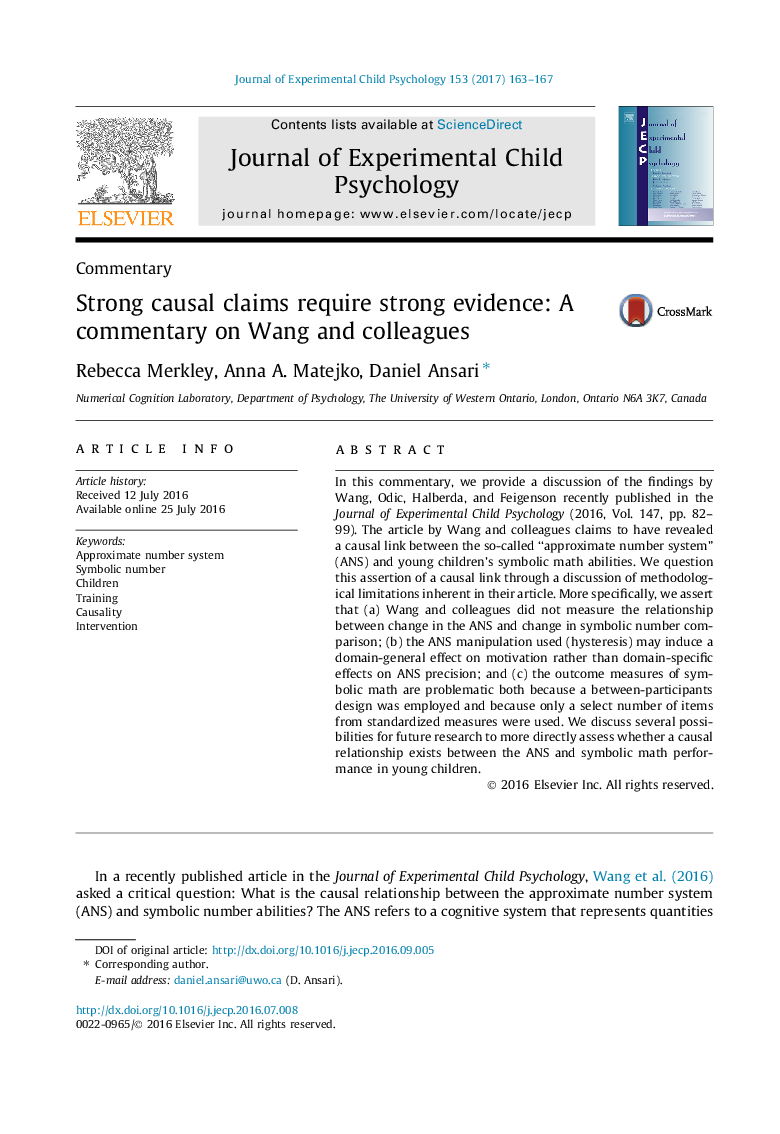| Article ID | Journal | Published Year | Pages | File Type |
|---|---|---|---|---|
| 5040010 | Journal of Experimental Child Psychology | 2017 | 5 Pages |
â¢We critically review the findings by Wang et al. (2016).â¢We point out design limitations that undermine the causal claims made.â¢We emphasize the need to measure change in performance to test causality.â¢Future directions for research on the causal relationship between the 'ANS' and math are outlined.
In this commentary, we provide a discussion of the findings by Wang, Odic, Halberda, and Feigenson recently published in the Journal of Experimental Child Psychology (2016, Vol. 147, pp. 82-99). The article by Wang and colleagues claims to have revealed a causal link between the so-called “approximate number system” (ANS) and young children's symbolic math abilities. We question this assertion of a causal link through a discussion of methodological limitations inherent in their article. More specifically, we assert that (a) Wang and colleagues did not measure the relationship between change in the ANS and change in symbolic number comparison; (b) the ANS manipulation used (hysteresis) may induce a domain-general effect on motivation rather than domain-specific effects on ANS precision; and (c) the outcome measures of symbolic math are problematic both because a between-participants design was employed and because only a select number of items from standardized measures were used. We discuss several possibilities for future research to more directly assess whether a causal relationship exists between the ANS and symbolic math performance in young children.
